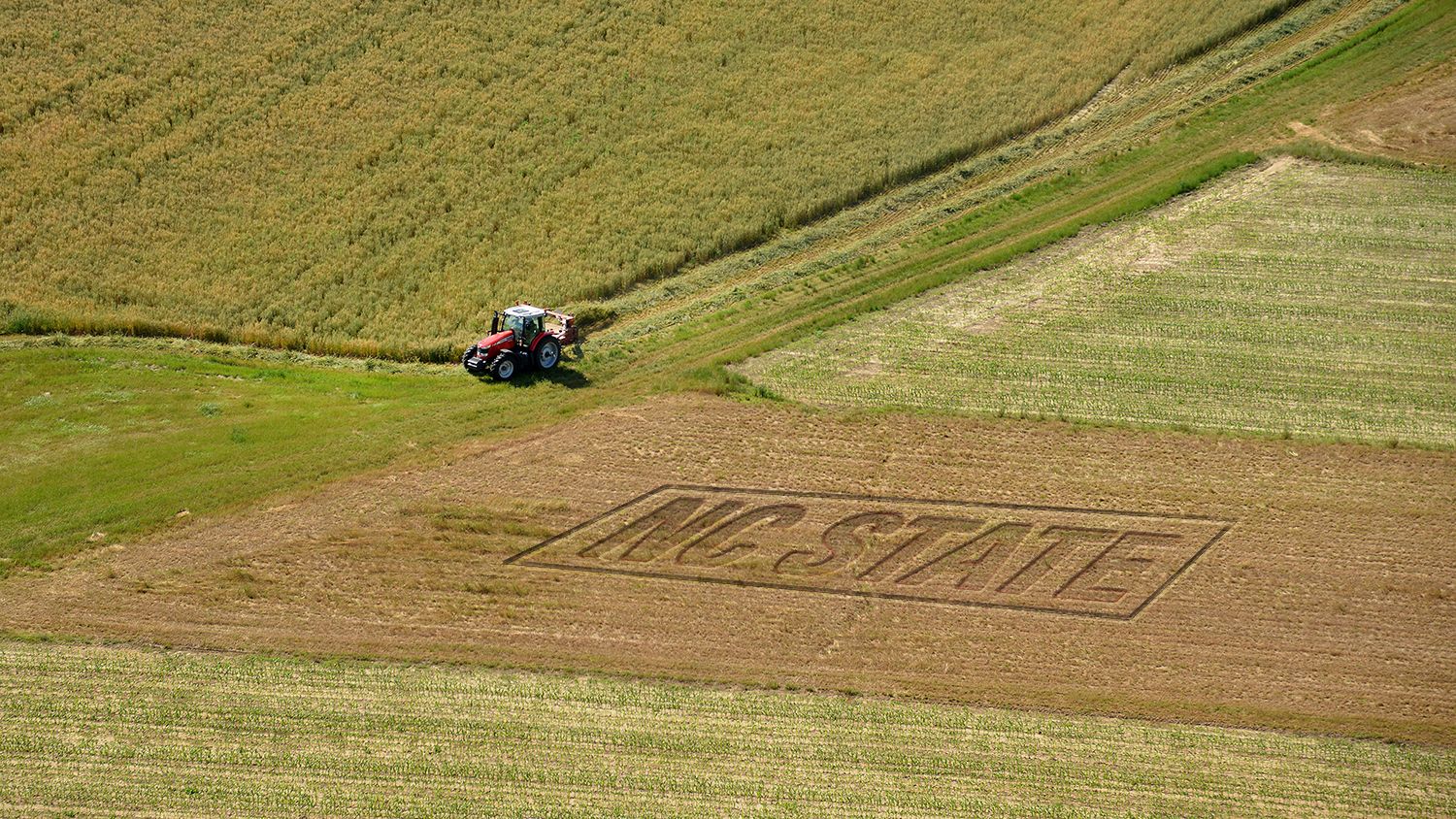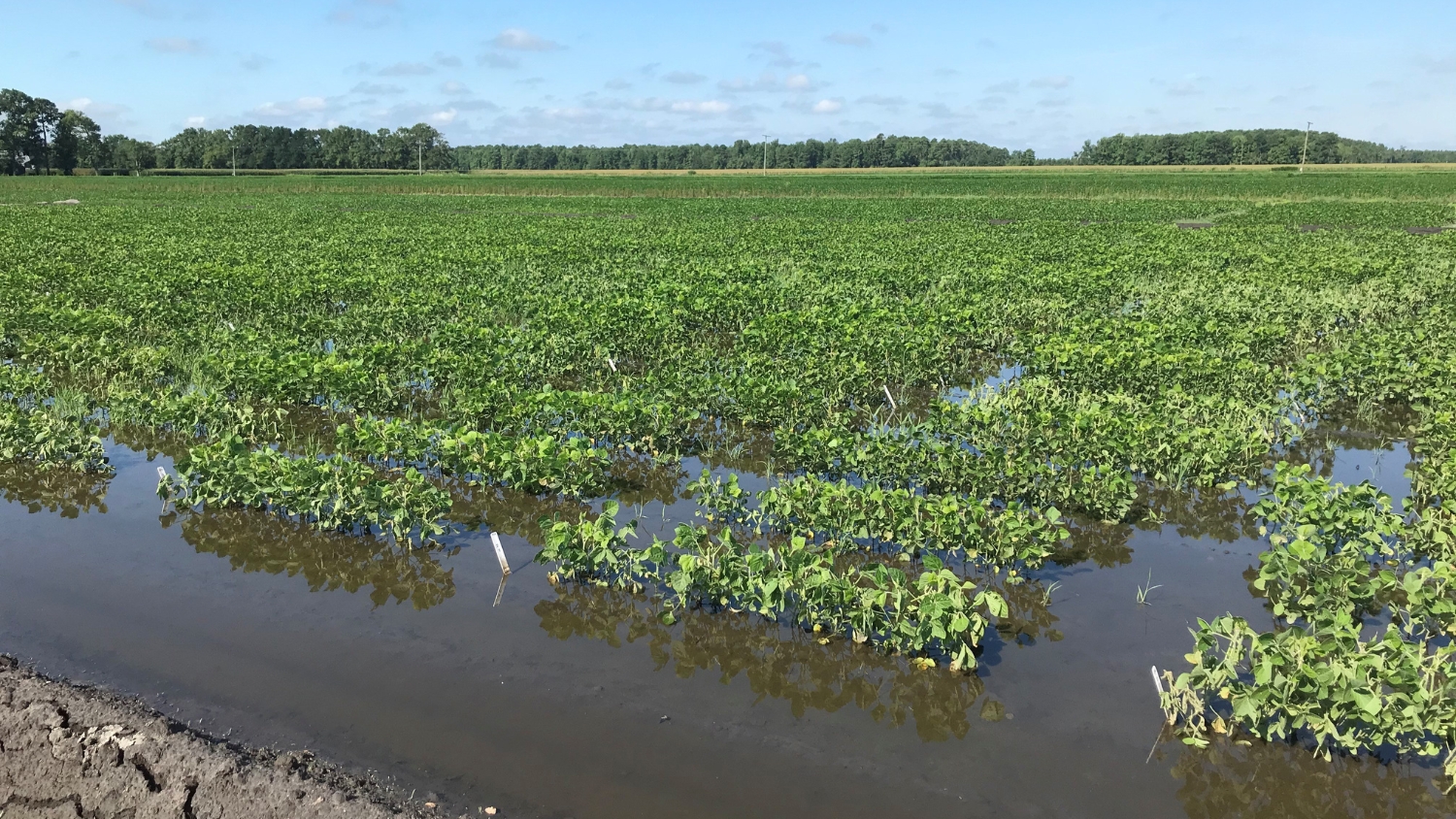
Extreme weather requires crop resiliency. It’s a fact North Carolina faces from frequent tropical storms and intense rainfall events.
Floyd, Matthew, Florence, and Ophelia are names familiar to but frowned upon by most NC farmers. Catastrophic events like these gain national attention and cause billions in agricultural losses.
However, single events of intense rain can flood crop fields and have a major impact. These may not be headline events, but they cause crop losses more often. Records show that typical NC weather stations experience extreme three-inch precipitation events every one to two years, occasionally more.
Farmers are no longer just dodging fall’s tropical events. Temporary field flooding deprives plants of light, oxygen and nutrients, causing reduced nitrogen fixation, stunting, defoliation and plant death. The yield losses can be equivalent to drought.

Flood-Tolerant Soybean Variety Made Public
In work funded by the North Carolina Soybean Producers Association and the United Soybean Board, the USDA-ARS Soybean Nitrogen Fixation Research Unit has released the first maturity group (MG) VI flood-tolerant soybean line with commercially competitive yield and elevated seed oil.
Variety USDA-N6006, previously designated as N11-352, was not intentionally bred for flood tolerance but was identified as such through field evaluations conducted by retired USDA-ARS breeder Tommy Carter.
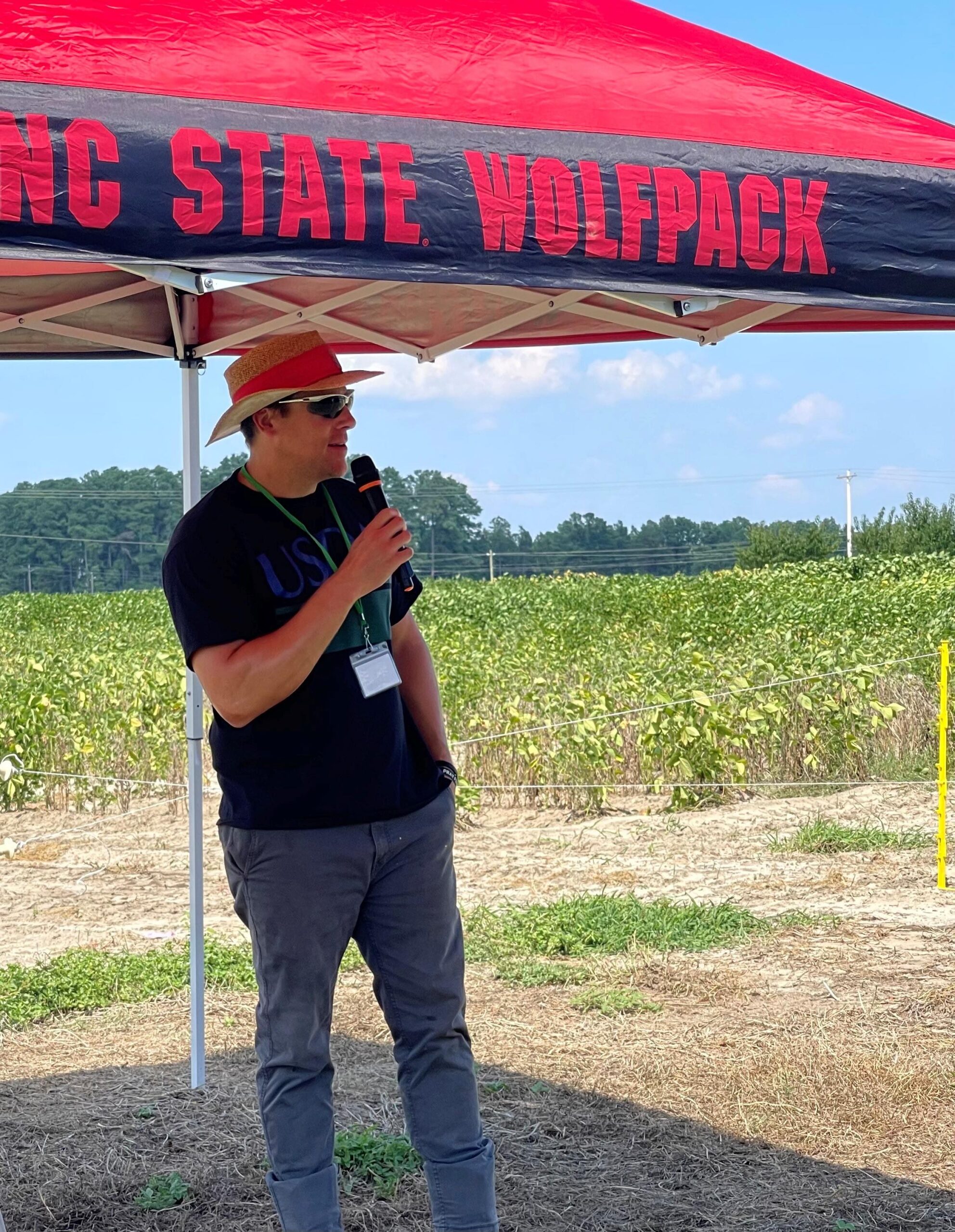
Breeder Ben Fallen currently leads the group’s ongoing flood tolerance research, funded by the North Carolina Soybean Producers Association and the United Soybean Board. The group focuses on a yield-first approach.
“The initial variety screening work started at the Tidewater Research Station, which has high organic content soil that retains water well,” Fallen said. “While we were initially screening advanced lines for high yield, Plymouth’s atypical soil and geography provided the right conditions to select for flood tolerance as well. It was the right place and time for N11-352 to shine.”
The new variety performed well in Official Variety Trials, yielding similarly to three conventional varieties, and in collaborative tests at the University of Missouri, the University of Arkansas and Louisiana State University.
It received an unexpected opportunity in 2018 when Hurricane Florence delivered 15-20 inches of rain to OVT sites in Robeson and Sampson counties over four days.
“In a double crop scenario in 2018, N11-352 yielded 10-18% higher than our conventional checks,” Fallen said. “That event actually changed the variety rankings that year.”
When Flood Tolerance Matters
Flood impact is a function of growth stage and flood duration. Soybeans are negatively affected by flooding at germination; vegetative growth stages, when root growth and nodulation can be suppressed; and reproductive growth stages, when pod set and seed fill occur.
Variety selection has little effect on flood response during germination but plays a bigger role in the vegetative state when plants can rebound and recover flood-induced nutrient losses.
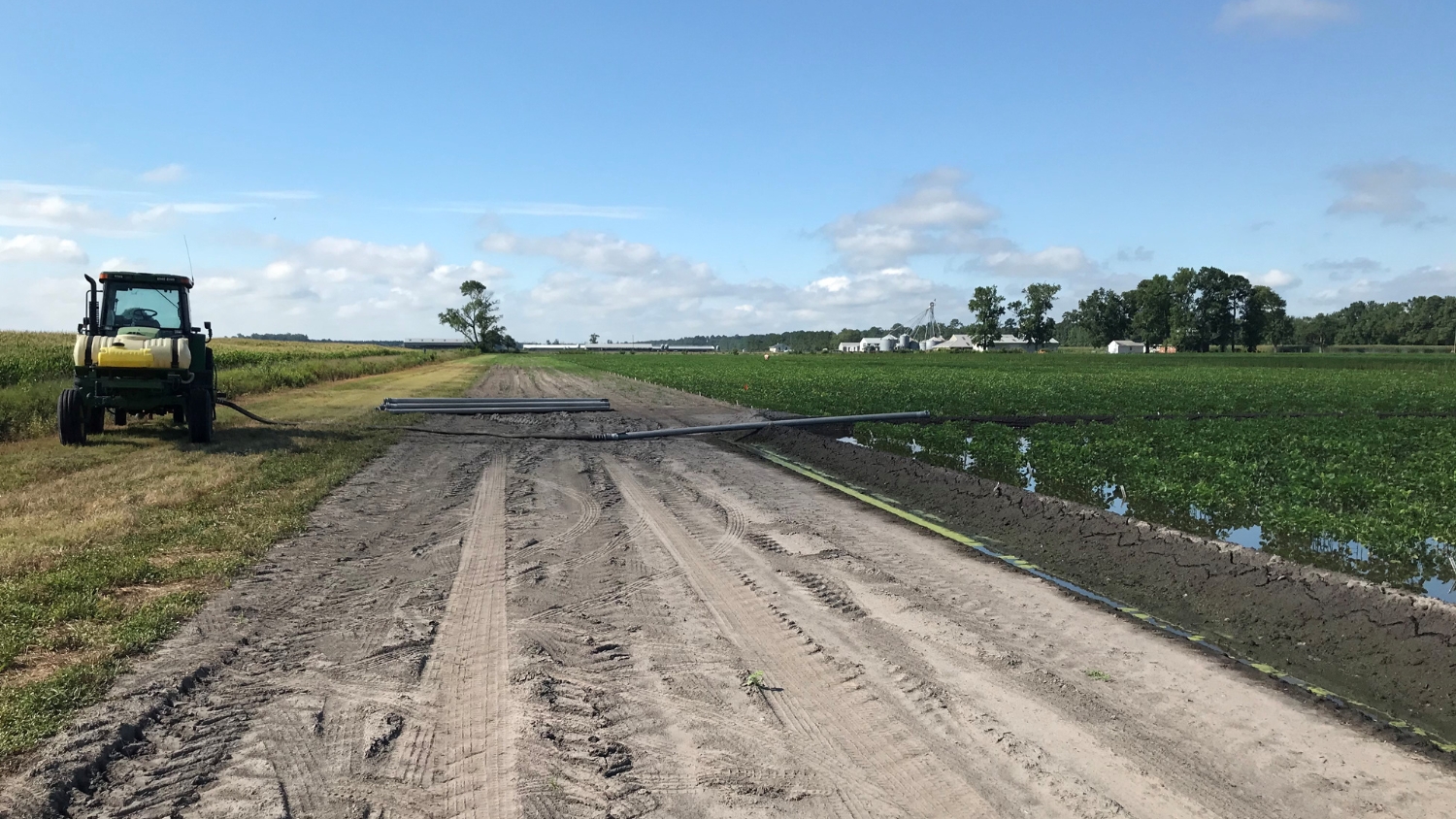
What Constitutes Flooding?
In Fallen’s studies, trials were designed to simulate saturated soils — those that stay wet for a prolonged time, often in microenvironments. Fields were flooded with several inches of fresh water for seven days and then observed for stress symptoms.
“Typically, we evaluate late vegetative growth at V4 and early reproductive growth at R1,” Fallen said. “We evaluate visual symptoms 7 and 14 days after flooding is released. The bottom few inches of the plants are flooded, not the entire plant, to simulate a typical heavy rain event. If plants are partially or fully submerged for any period of time, the chances of the plant surviving are very small.”
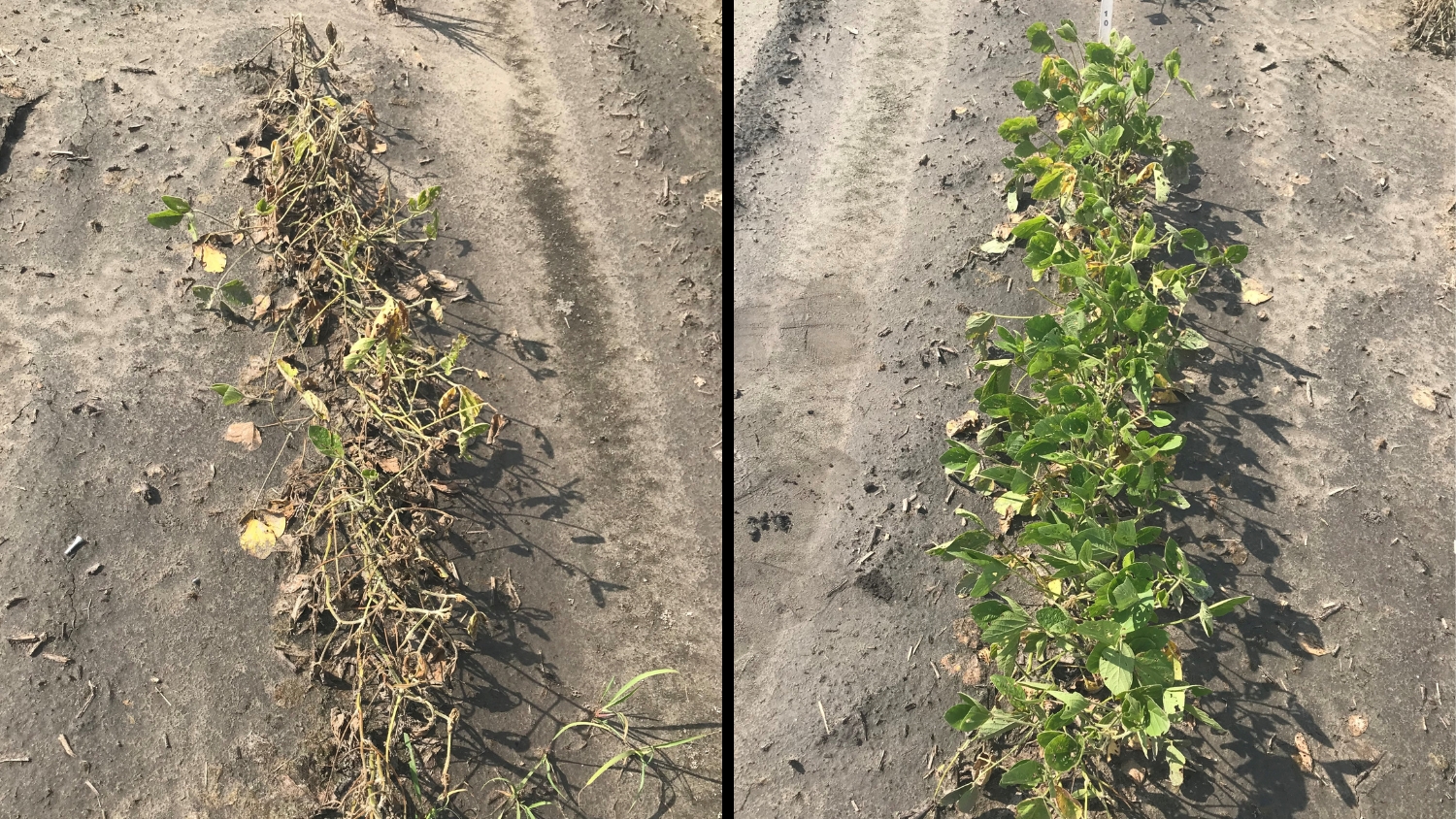
Looking to Earlier Groups
Fallen says that flooding during pod fill and shortly after full maturity is reached could also be an issue, particularly in seed quality. Because late August through October is the prime season for heavy rainfall, more investigation on late-stage impacts and early maturity groups is coming.
“As we’re changing maturity groups and planting dates, the chances of events occurring during those times are probably higher than for a later maturity group. Pod fill is important for yield.”
With growing interest in earlier maturing groups, Fallen’s work is shifting too.
“Our original focus was on groups six, seven and eight,” Fallen said. “We’re shifting our focus to earlier groups four, five and six, but the breeding process takes a long time. We’re collaborating with others to help accelerate screening. Once we’ve identified the mechanisms, it will make selection easier in the future.”
Germplasm vs. Cultivar Release
The public release is intended to make the variety’s genetic advantages available to all soybean breeders, public and private, for further improvement and commercial integration.
We wanted to get this valuable genetic material into the hands of as many public and private breeders as possible.
Because USDA-N6006 already offers high yield, Fallen says it’s easier for the industry to pick up other traits (like flood tolerance) and cuts commercial release timelines almost in half, potentially to four or five years.
“The USDA could license or contract with a private company, but we chose to release this as public germplasm,” Fallen said. “We wanted to get this valuable genetic material into the hands of as many public and private breeders as possible. It’s the fastest way for us to get these benefits to the ultimate benefactor — the farmer.”
Want More Plant Progress?
Crop and Soil Sciences’ research impacts farmers, students, and NC citizens through innovations in food, feed, fuel, and fiber. Follow how our discoveries affect agriculture and environmental science by joining our weekly newsfeed.
If you are a student interested in agronomy or crop production, investigate our undergraduate and graduate degree programs. Then, join us for a guided email tour of our department and university.
Improving NC agriculture and the environment through stewardship is just part of how we are growing the future.
This story was partially funded by U.S. soybean farmers.
